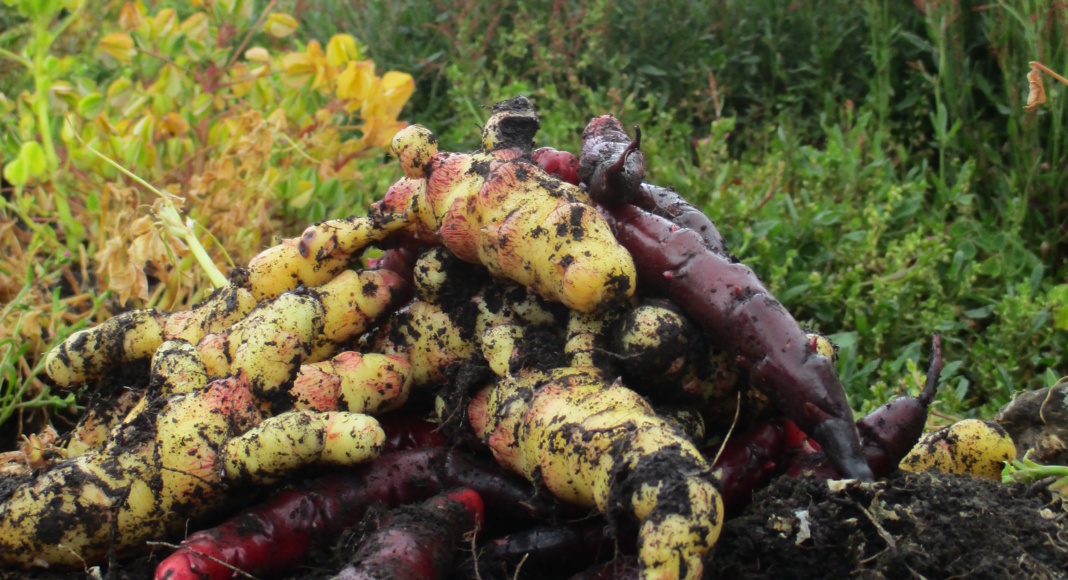In 2017, a group of women activists in Cajamarca began documenting their perceptions of community, wellbeing and alternatives to extractivism through photography. Their images commented on the concept of development and provided a new medium for them to continue resisting large-scale mining projects in the region.
Katy Jenkins, Professor of International Development at Northumbria University’s Centre for International Development, who designed and led the project, shares some of the women’s hopes behind their photos.
The ‘Women, Mining and Photography’ project, funded by the Leverhulme Trust, aimed to give anti-mining activists an opportunity to reflect on what the idea of ‘development’ means to them, in the context of living alongside large-scale mining projects in the Peruvian Andes.
The project drew on a visual research method called Photovoice, which combines photography with grassroots social action. Sometimes referred to as ‘participatory photography’, this approach, which was developed in the early ’90s, sees participants using cameras to document, reflect upon, and communicate their concerns while stimulating social change.
The photographers in this project were a group of 12 female activists from three community organisations based in the Cajamarca region of Peru – two from Cajamarca city and one from Celendín, a rural community in the Cajamarca province. For the last 20 years, these activists and their organisations have opposed the Yanacocha gold mine* – the largest gold mine in South America – and have resisted at least two planned new mining projects, namely the Cerro Quilish and Congo projects.
Through a series of workshops and meetings in 2017 and 2018, the women used photography to explore themes of community, wellbeing and alternatives to extractivism. We chose these themes together, working from the women’s ideas of development, and making sure they were broad enough to stimulate photography without being too prescriptive. For many of the women it was the first time they had used a camera.
As the project progressed, it developed a life of its own, and it became clear that the activists envisaged their photography as a direct extension of their other activist activities, rather than as part of an academic project. In particular, they saw their photography as an opportunity to capture and celebrate the richness of Cajamarca’s natural and cultural heritage, which they feel is threatened by continued large-scale mining activities in the area, and the ever-present threat of its expansion.
The participants saw the project as an opportunity to showcase their continued commitment to resisting large-scale resource extraction, particularly at a time when Cajamarca’s mining projects were not a focus of international attention and there was little in the way of overt protest or resistance.
As echoed in the subject matter of the photos and the accompanying captions and poems, it was important for the women to demonstrate that their organisations were still active, and to oppose resource extraction.
Through their words, the women articulate their motivations for taking each photo, and the meanings of each of these carefully selected images.
All in all, the prime motivation for all of the photographers to participate in the project was to enable their perspectives to travel and to share their experiences and aspirations with a wider, international audience. So far, their photos have been exhibited in Cajamarca, Newcastle (UK), and Brussels, giving an opportunity for their voices to be heard beyond their immediate social and political sphere.
***

I see in you the uncertain dawn, The solitude that we are left with by the destruction of our land. An empty horizon of eternal uncertainty. Your soul invaded by the fear we are left with. The anguish of living wrapped in a black shadow Created by man through evil, selfishness and greed. I hear the cry of mama Pacha, the sadness of her children, The breath of my wounded mother, her almost lifeless moan. I lift my staff and fight for her. I sense in you the devotion to protect our home, The best legacy that you can leave us. I taste the victory of an unparalleled fight Against the extractivism that wants to take our land. - Killari *
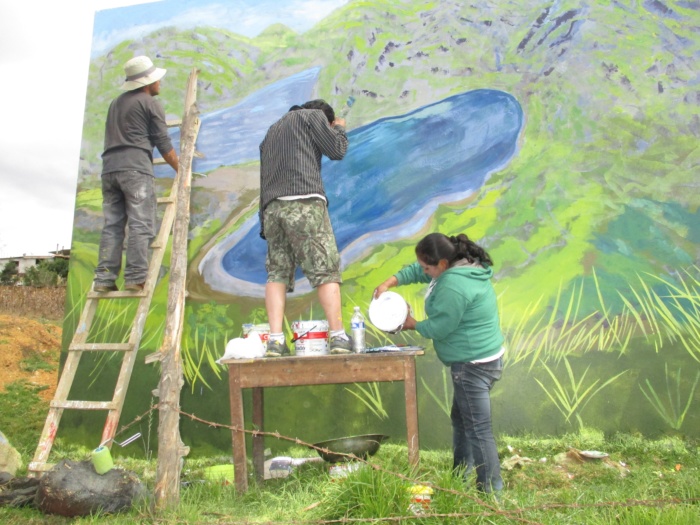
Men and women struggling together as equals, This is how we build people power! With murals, with placards, with poems and with songs, I am fighting too! Because here you will discover Celendín, resisting with dignity. - Yeni Cojal Rojas *
Many of the women’s photos do not directly reference extractivism, but instead reflect on existing and hoped for development alternatives for their communities. Cajamarca’s agricultural heritage is presented as an important avenue for alternative future development, the kind which is not based on extractivism.

I smell aromatic plants, a fresh and green fragrance. I hear that they cure various ailments and are also natural tranquillisers. I see many flowers, of different colours and gentle aromas. I taste a gentle tea, aromatic, a natural flavour. I touch the leaves, soft and delicate. I feel worry, Because Cajamarca produces a large quantity of medicinal plants, Which are transported to Chiclayo to be processed. If only we could process them here in Cajamarca, Giving work to women and enabling them to improve their lives. - Chepita *
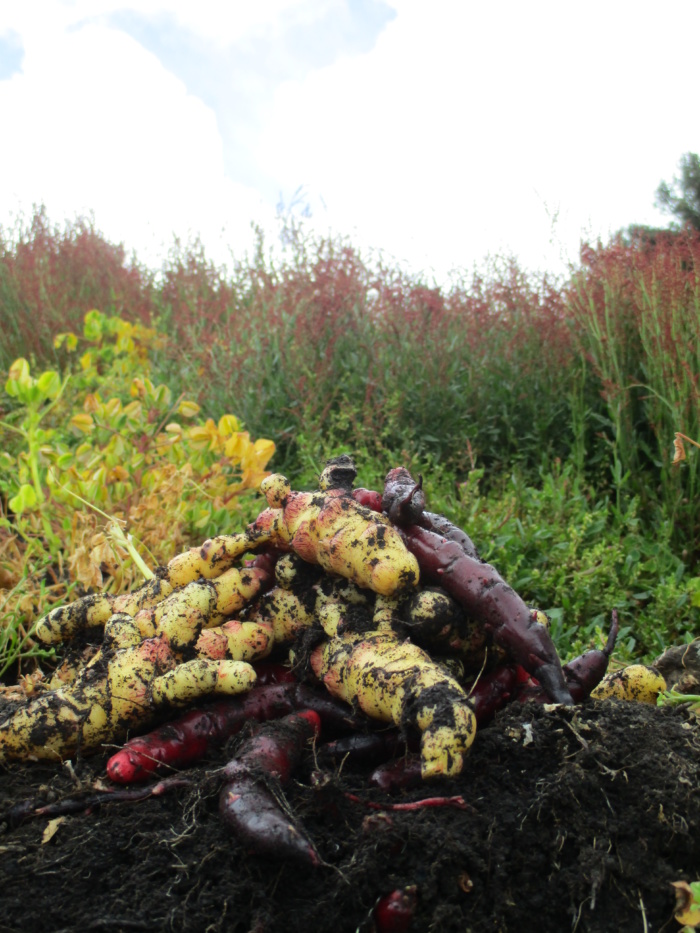
I took [this photo] because this comes from our land. We dedicate ourselves to this. It is an alternative to mining. - Felicita Vásquez Huamán *
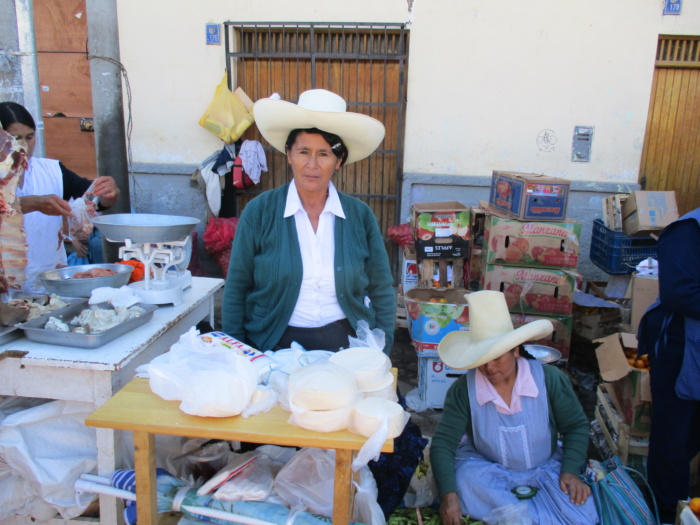
The smell of cheese. The invitation from the peasant market woman. The sensation of tasting the cheese, Soft or hard, freshly wrapped. I feel a contagious happiness seeing the woman, Selling her dairy products. - Ana *
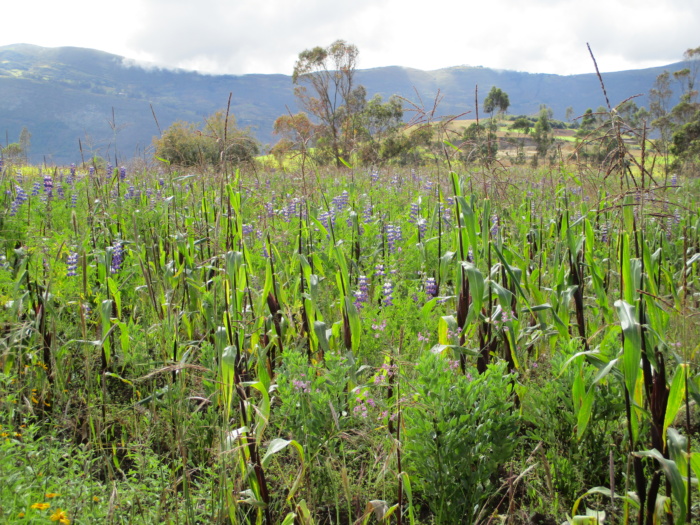
This photo represents the importance of looking after the flora and fauna Of our region, Cajamarca. The importance of producing ecological products Without using pesticides that poison and kill humankind. The combination of lupin and corn gives nitrogen to the soil. These products provide alternatives to mining and hydroelectricity, Which damage our ecosystem. - Gladis Chilon Gutiérrez *
In other photos, the women captured cultural practices that symbolise a particular way of life, which they feel is under threat from continued mining activities in their home region. Their photos, poems and captions celebrate this way of life but there is also a sense of nostalgia – they seek to capture and document it before it is lost.
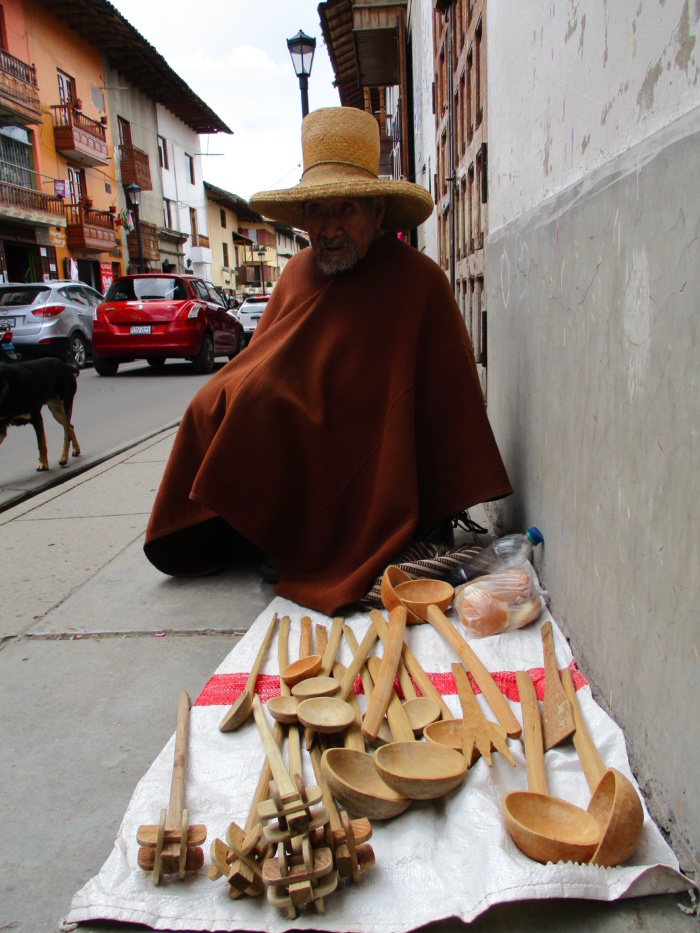
I see your face, made old by time that doesn’t wait. Your last remaining strength, You use to work. Carving wood, You make so many little spoons. You carry them in your saddlebag, To sell in the city. You sit waiting, For someone who would like to buy them. Yours is a noble job, Dignified, to be valued. With these little spoons, my culture lives on. Like the ones I remember my mother gave me to eat my dinner with. - Killari *
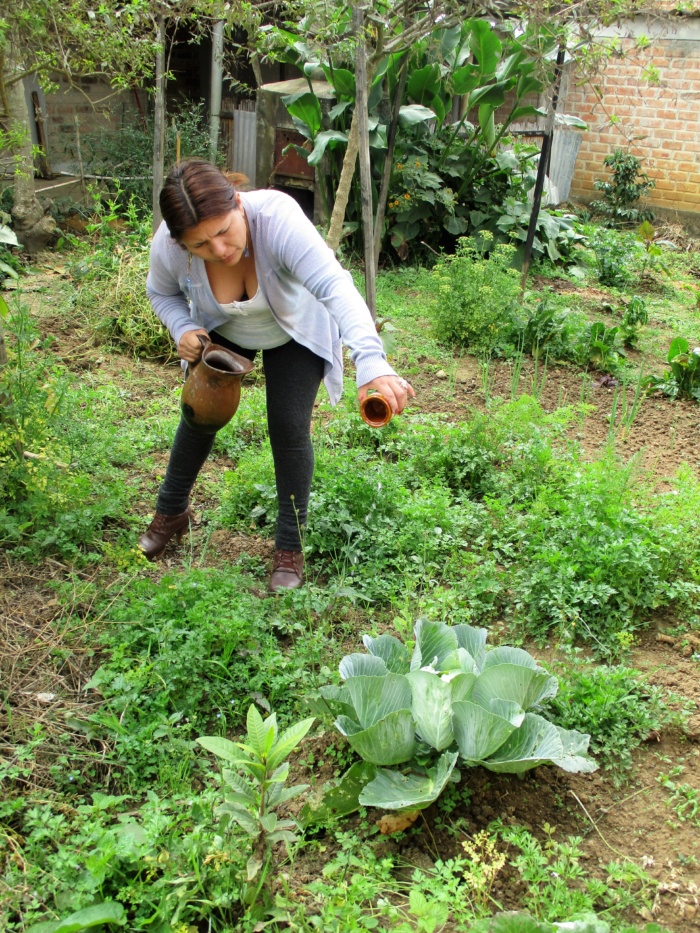
My fingers close around the heavy jug. As I pick up the glass, I calculate the amount of water I should use on the earth and the plants As an offering and thanks to my Mother Nature. My feet on the ground. The security that this is my land, My earth where I was formed and forged against all the odds, And through the sweat and toil with which I labour my plot. The aroma of the plants and, stronger still, the deep scent of coriander. At the same time, I hear the sound of the drops of water that I allow to fall, And the wind whistles in my ears, the force with which it moves The leaves of the plants and the branches of the trees and fruit bushes. This is the result of my efforts at cultivation. I space out the plants for a more productive harvest, with the help of the divine blessing of our God and our warm sun. In my throat the vital liquid of my water, Pure and clear, from my sacred and brave land, Under a rocky hillside, green with the lush plants that my cows eat To produce their milk. From their milk comes a variety of cheeses, That are never missing from a peasant’s dinner table, Accompanied by a delicious bread made from grain harvested by peasants’ hands, and a full mug of our hot chocolate produced in the Marañon valley, and with it the sound of the river. Yes, when a foreigner seeks to destroy it, we defend it with honour, this is my land. Enjoy it, and be served, with much pride and honour. - Yeni Cojal Rojas *
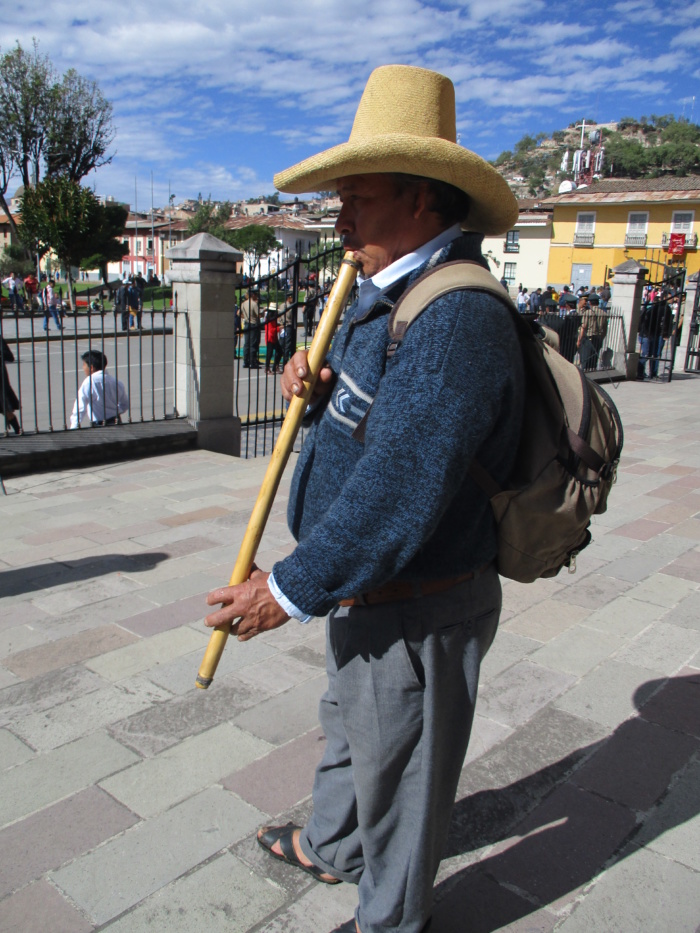
‘This is to do with wellbeing… He feels good and we see him there playing his instruments.’ - Dianira Trigoso Vizconde *
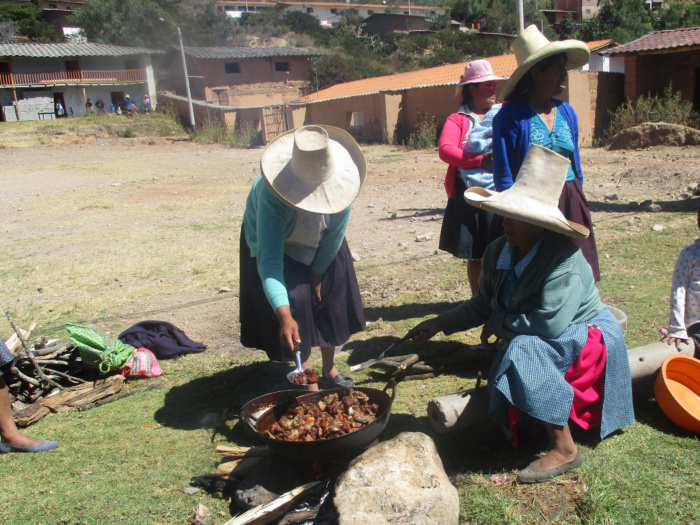
We are sharing food for fiestas patrias. We have slaughtered a pig And we are frying pork crackling that we’ll share with our neighbours. We are all happy. The children are excited, playing and running all around. - Blanca Tasilla Moqueira *
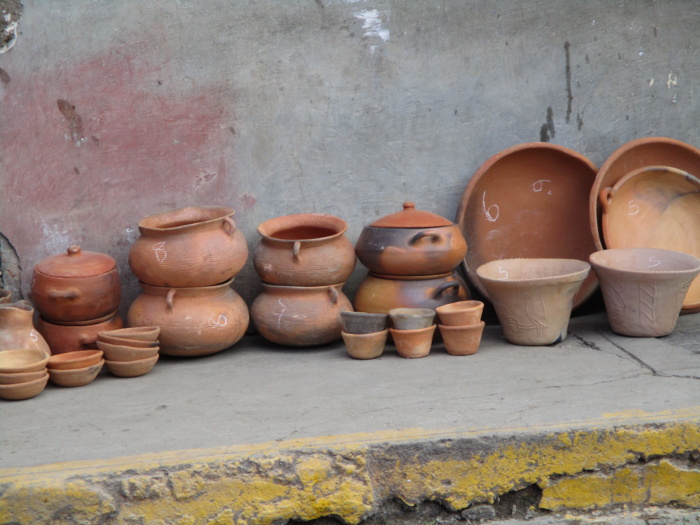
‘My mother used to tell me that the first plates were made of clay.’ - Liz *
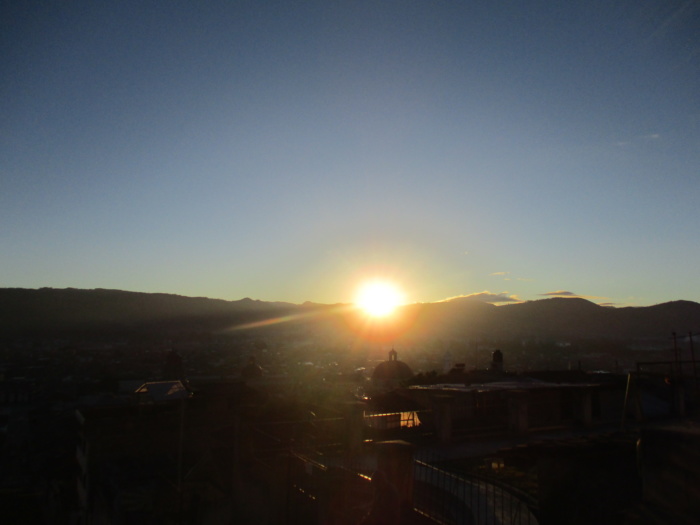
The sun, the source of life and health for people, animals and plants. The Incas worshipped the sun god, Inti, Without him there would be no life or health. The excitement of seeing the sun rise, everything changes, And it is the start of a new day, Giving me strength to keep moving forward. - Chepita *
Together the photos from this project contemplate opportunities for development that go beyond extractivism. Harnessing both optimism and nostalgia, they capture the women’s continued resistance and some of their hopes for the future – for themselves, their families and their communities.
*Yanacocha gold mine is the largest gold mine in South America and is owned by Newmont mining corporation (51%), the Peruvian Buenaventura (44%) and the Japanese company Sumitomo (5%) – when this research project took place, this 5% was owned by the International Monetary Fund.
N.B. Copyright for all photos is jointly held by the Women, Mining and Photography project and the individual named photographers.

